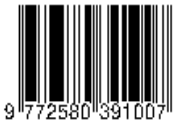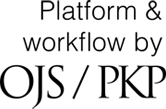DESAIN MODEL PEMBELAJARAN GROUP INVESTIGATION BERBASIS LITERASI INFORMASI UNTUK MENINGKATKAN HOTs DENGAN MENGAKOMODASI GAYA KOGNITIF REFLEKTIF DAN IMPULSIF
Keywords:
group investigation; literasi informasi; HOTs; gaya kognitif reflektif; gaya kognitif impulsifAbstract
Penelitian ini bertujuan untuk mendesain model pembelajaran Group Investigation berbasis literasi informasi untuk meningkatkan HOTs dengan mengakomodasi gaya kognitif reflektif dan impulsive. Untuk mendesain model pembelajaran tersebut menggunakan model pengembangan Plomp, yang hanya diikuti pada tahap penilaian awal dan tahap desain. Hasil penelitian diperoleh sintak model pembelajaran group investigation berbasis literasi informasi untuk meningkatkna HOTs (berpikir kritis dan kreativitas) dengan mengakomodasi gaya kognitif reflektif dan impulsive yang terdiri dari tujuh tahapan, meliputi: 1) pengelompokan (grouping) berbasis gaya kognitif reflektif dan impulsif; 2) perencanaan (planning) tugas berbasis literasi informasi; 3) penyelidikan (investigating); 4) pengorganisasian (organizing); 5) mempresentasikan (presenting); 6) evaluasi (evaluating) berbasis HOTs; dan 7) pengakuan (recognition) Kekhasan dari model pembelajaran Group Investigation hasil desain ini terletak pada: 1) Pengolompokan mahasiswa berdasarkan pada gaya kognitif reflektif dan impulsif; 2) dalam penyelesaian tugas mahasiswa diwajibkan untuk mengakses informasi melalui E-Resources seperti Google Advance, Science Direct, Google Schoolar, Library Genesis, EBSCO, DOAJ, Proquest, SCOPUS, GARUDA, SINTA; dan 3) adanya penambahan tahap recognition, karena tugas/karya dari mahasiswa harus ada pengakuan secara nasional maupun Internasional (berupa sertifikat seminar nasional/internasional, atau sertifikat hak cipta)
References
[2] B. Birgili, “Creative and critical thinking skills in problem-based learning environments,” Üstün Zekalılar Eğitimi ve Yaratıcılık Derg., vol. 2, no. 2, pp. 71–80, 2015.
[3] N. R. Council, Education for life and work: Developing transferable knowledge and skills in the 21st century. National Academies Press, 2012.
[4] N. M. Arsad, K. Osman, and T. M. T. Soh, “Instrument development for 21st century skills in Biology,” Procedia-Social Behav. Sci., vol. 15, pp. 1470–1474, 2011.
[5] C. Shannon, J. Reilly, and J. Bates, “Teachers and information literacy: understandings and perceptions of the concept,” J. Inf. Lit., vol. 13, no. 2, pp. 41–72, 2019.
[6] A. N. Çoklar, N. D. Yaman, and I. K. Yurdakul, “Information literacy and digital nativity as determinants of online information search strategies,” Comput. Human Behav., vol. 70, pp. 1–9, 2017, doi: 10.1016/j.chb.2016.12.050.
[7] S. Zubaidah, “Keterampilan abad ke-21: Keterampilan yang diajarkan melalui pembelajaran,” in Seminar Nasional Pendidikan dengan tema “Isu-isu Strategis Pembelajaran MIPA Abad, 2016, vol. 21, no. 10.
[8] I. W. Redhana, “Mengembangkan keterampilan abad ke-21 dalam pembelajaran Kimia,” J. Inov. Pendidik. Kim., vol. 13, no. 1, 2019.
[9] D. Kurniati, R. Harimukti, and N. A. Jamil, “Kemampuan berpikir tingkat tinggi siswa SMP di Kabupaten Jember dalam menyelesaikan soal berstandar PISA,” J. Penelit. dan Eval. Pendidik., vol. 20, no. 2, pp. 142–155, 2016.
[10] M. H. Yee, J. Md Yunos, R. Hassan, T. K. Tee, M. M. Mohamad, and W. Othman, “Disparity of learning styles and higher order thinking skills among technical students,” Procedia-Social Behav. Sci., vol. 204, pp. 143–152, 2015.
[11] Y. M. Heong, J. M. Yunos, W. Othman, R. Hassan, T. T. Kiong, and M. M. Mohamad, “The needs analysis of learning higher order thinking skills for generating ideas,” Procedia-Social Behav. Sci., vol. 59, pp. 197–203, 2012.
[12] S. Sharan, “Group Investigation Theoretical Faoundations,” in SECONDARY SCHOOLS AND COOPERATIVE LEARNING Theories, Models, and Strategies, J. E. P. A. D. Digby, Ed. Routledge, 2013, pp. 251–277.
[13] T. Plomp, “Educational and training system design. Enschede.” The Netherlands: University of Twente, 1997.
[14] K. Suartika, I. B. Arnyana, and G. A. Setiawan, “Pengaruh Model Pembelajaran Kooperatif Tipe Group Investigation (Gi) Terhadap Pemahaman Konsep Biologi Dan Keterampilan Berpikir Kreatif Siswa SMA.,” J. Pendidik. dan Pembelajaran IPA Indones., vol. 3, no. 1, 2013.
[15] R. Lazarowitz, “Learning Biology in Cooperative Investigative Groups,” in SECONDARY SCHOOLS AND COOPERATIVE LEARNING, J. E. P. A. D. Digby, Ed. New York: Routledge, 2013, pp. 341–363.
[16] H. Istikomah, S. Hendratto, and S. Bambang, “Penggunaan Model Pembelajaran Group Investigation untuk menumbuhkan sikap ilmiah siswa,” J. Pendidik. Fis. Indones., vol. 6, no. 1, 2010.
[17] G. Aksoy and F. Gurbuz, “Group Investigation Teaching Technique in Turkish Primary Science Courses.,” Online Submiss., vol. 21, no. 1, pp. 99–106, 2013.
[18] N. Farida and I. Cintamulya, “Perbedaan Berpikir Kritis Siswa Antara yang Menggunakan Model Inquiry Based Learning dengan Model Problem Based Learning Ditinjau dari Gaya Kognitif Reflektif Dan Impulsif,” in Proceeding Biology Education Conference: Biology, Science, Enviromental, and Learning, 2018, vol. 15, no. 1, pp. 75–81.
[19] G. Rahayuni, “Hubungan keterampilan berpikir kritis dan literasi sains pada pembelajaran IPA terpadu dengan model PBM dan STM,” J. Penelit. dan Pembelajaran IPA, vol. 2, no. 2, pp. 131–146, 2016.
[20] A. R. Saavedra and V. D. Opfer, “Teaching and learning 21st century skills: Lessons from the learning sciences,” A Glob. Cities Educ. Netw. Report. New York, Asia Soc., 2012.
[21] S. Suciati, “Memahami Hakikat dan Karakteristik Pembelajaran Biologi dalam Upaya Menjawab Tantangan Abad 21 serta Optimalisasi Implementasi Kurikulum 2013,” . J. Florea., vol. 2, no. 1, pp. 29–35, 2015.
[22] S. ŽivkoviĿ, “A model of critical thinking as an important attribute for success in the 21st century,” Procedia-Social Behav. Sci., vol. 232, pp. 102–108, 2016.
[23] J. E. R. Marantika, “The Contribution Of Visual Literacy And Creative Thinking On Writing Skills,” in Journal International Seminar on Languages, Literature, Arts, and Education (ISLLAE), 2019, vol. 1, no. 1, pp. 5–8.
[24] A. A. Nugroho, N. Nizaruddin, I. Dwijayanti, and A. Tristianti, “Exploring students’ creative thinking in the use of representations in solving mathematical problems based on cognitive style,” JRAMathEdu (Journal Res. Adv. Math. Educ., vol. 5, no. 2, pp. 202–217, 2020.
[25] C. M. McKeever, “Information literacy skills in Year 14 school leaving pupils-are they ready for third level study?,” J. Inf. Lit., vol. 7, no. 1, pp. 99–106, 2013.
[26] Z. K. Liu, J. He, and B. Li, “Critical and creative thinking as learning processes at top-ranking Chinese middle schools: possibilities and required improvements,” High Abil. Stud., vol. 26, no. 1, pp. 139–152, 2015.
[27] B. S. Haug and S. M. Mork, “Taking 21st century skills from vision to classroom: What teachers highlight as supportive professional development in the light of new demands from educational reforms,” Teach. Teach. Educ., vol. 100, p. 103286, 2021.
[28] T. J. Kennedy and C. W. Sundberg, “21st Century Skills,” in Science Education in Theory and Practice, Springer, 2020, pp. 479–496.
[29] S. B. Adeyemi, “Developing critical thinking skills in students: A mandate for higher education in Nigeria,” Eur. J. Educ. Res., vol. 1, no. 2, pp. 155–161, 2012.
[30] A. L. Ball and B. L. Garton, “Modeling higher order thinking: The alignment between objectives, classroom discourse, and assessments,” J. Agric. Educ., vol. 46, no. 2, pp. 58–69, 2005.
[31] S. Bell, “Project-based learning for the 21st century: Skills for the future,” Clear. house, vol. 83, no. 2, pp. 39–43, 2010.
[32] C. E. Cash, “The Impact Of Project-Based Learning On Critical Thinking In A United States History Classroom,” 2017.
[33] A. Yudiernawati, P. Setyosari, I. N. S. Degeng, and A. Rudianto, “Pengaruh Strategi Pembelajaran dan Gaya Kognitif terhadap Prestasi Belajar Aplikasi Proses Keperawatan pada Pembelajaran Klinik Keperawatan,” J. Pendidik. Hum., vol. 3, no. 1, pp. 31–40, 2015.
[34] K. M. A. Rogers, “A preliminary investigation and analysis of student learning style preferences in further and higher education,” J. Furth. High. Educ., vol. 33, no. 1, pp. 13–21, 2009.
[35] V. S. Minchekar, “The Role of Cognitive Style in Creative Thinking among College Students,” Psychol. Behav. Sci. Int. J., vol. 6, no. 1, p. 555679, 2017.
[36] A. Yuniasari, “Advances in Language and Literary Studies The Impact of Cognitive ( Reflectivity / Impulsivity ) on Tertiary EFL Learners ’ Syntactic Complexity in Descriptive Writing,” Adv. Lang. Lit. Stud., vol. 10, no. 1, pp. 86–90, 2019, doi: http://dx.doi.org/10.7575/aiac.alls.v.10n.1p.86.
[37] W. R. Gall, MD., Gall, J.P. & Borg, Educational Research. Boston: Pearson Education, Inc., 2013.
[38] B. Joyce, M. Weil, and B. Showers, “Models of Teaching 5th,” Bost. Allyn Bacoon, 2003.
[39] S. Sharan, P. Kussell, R. Hertz-Lazarowitz, Y. Bejarano, S. Raviv, and Y. Sharan, “Cooperative learning effects on ethnic relations and achievement in Israeli junior-high-school classrooms,” in Learning to cooperate, cooperating to learn, Springer, 1985, pp. 313–344.
[40] S. Sharan and Y. Sharan, “Group investigation: Expanding cooperative learning,” New York Teach. Coll. Pres, 1992.
[41] R. E. Slavin, “Cooperative learning: Theory, research and practice. Boston,” MA, Ally Bacon, 1995.
[42] I. G.-C. Tan, S. Sharan, and C. K.-E. Lee, Group investigation and student learning: An experiment in Singapore schools. Marshall Cavendish Academic, 2006.
[43] Baharudin & Wahyuni, Teori Belajar dan Pembelajran. Jogyakarta: AR-RUZZ MEDIA, 2009.
[44] D. Zingaro, “Group investigation: Theory and practice,” Ontario Inst. Stud. Educ., vol. 2, no. 7, p. 1, 2008.
[45] M. Huda, Cooperative Learning: Metode, Teknik, Struktural, dan Model Penerapan. Yogjakarta: Pustaka Belajar, 2011.
[46] W. K. S. Achmad and P. Bundu, “Suradi, & Jufri, M. 2018. Application of group







